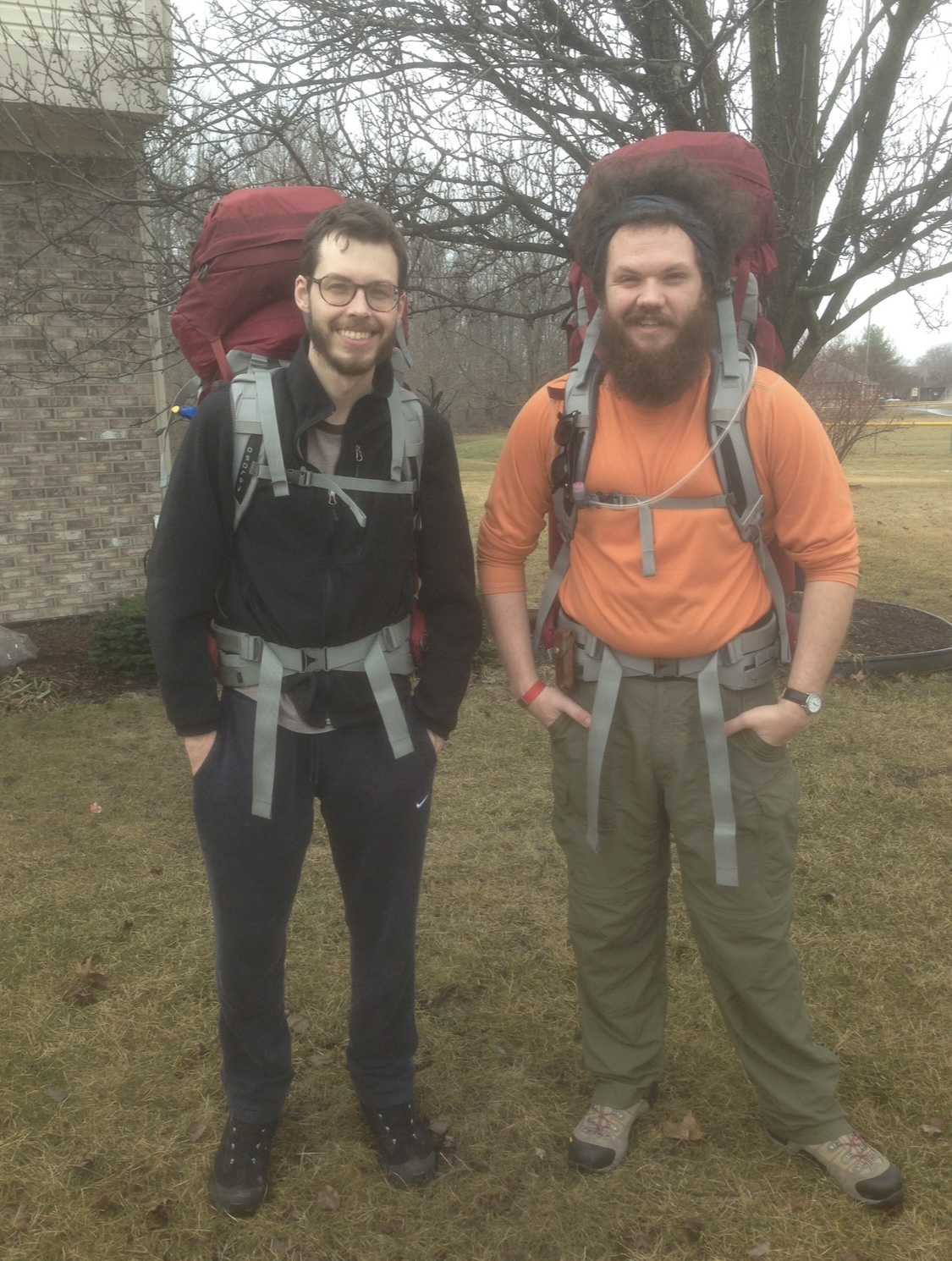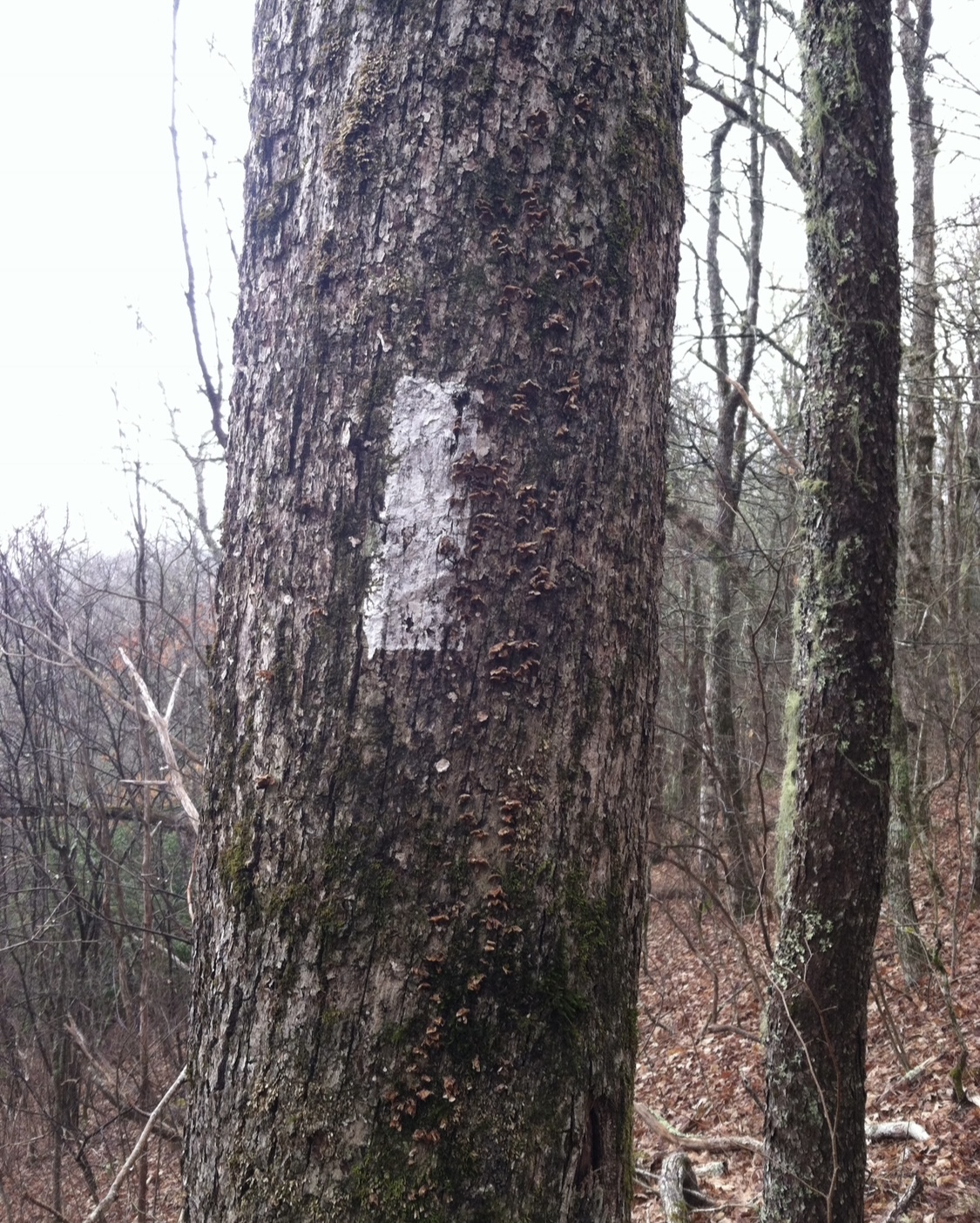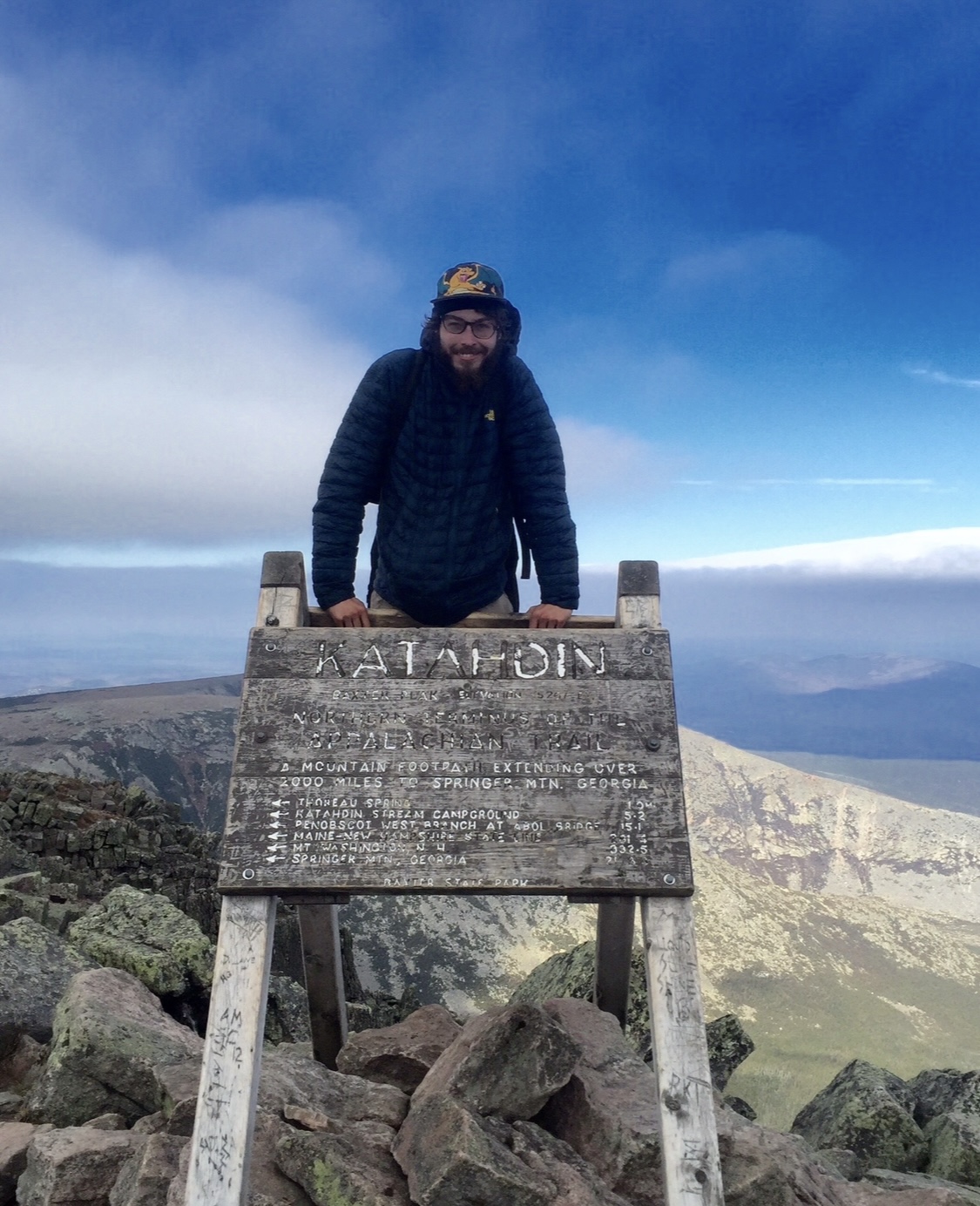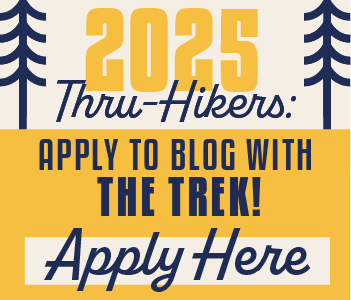Thru-Hiking While Blind: Completing the Appalachian Trail With A Visual Disability
I’m legally blind and completely color blind. I was born with a genetic visual disability that shaped my world as I grew up, from struggling to learn how to match clothes to eventually accepting that I’ll never drive a car. In time, backpacking became my escape from many aspects of the rigid seeing world of cities and schools — but in truth, hiking comes with its own set of challenges and limitations.
When I think back on my first few backpacking trips in southern Indiana around age 17, I’m always struck by how much smaller the woods seemed. My tent was bigger and heavier, but the world inside it seemed as cramped as could be. I was a baby hiker — plucky, happy, and more than a little naive.
I’m not sure we even had headlamps on those early camping trips. If we had anything, it was more like just regular flashlights. The concept of “getting lost” seemed like a distant mirage, and the only time I can ever remember “night hiking” was to escape a torrential downpour at 4 a.m. on an overnight trip during college.
We backpacked in spring and summer, when there were no fallen leaves to cover up the trail and minimal signposting was needed. Hiking a handful of miles while following behind my best friend seemed easy enough. All I had to do was put one foot in front of the other on a relatively straightforward trail.
At least until that same best friend asked during college if I’d be interested in hiking the Appalachian Trail. Happy, plucky, and more than a little naive — reader, I said yes. At the time, I was just another kid training with an external-frame backpack. Today I can tell you I’m a visually disabled thru-hiker, but it wasn’t until I began the Appalachian Trail in 2015 that I really learned why that matters.
Navigational Challenges
Whether you’re a seasoned AT thru-hiker or have just done a section here or there, you likely know that the markings that help you navigate the trail are white rectangles of paint called “blazes.” The trail is, thankfully, marked with a seemingly endless supply of these white blazes, meaning by the time you reach one you can often see where you’re headed next in an instant.
That’s how things work in theory, anyway, and in that way, the AT is actually an amazing trail for a visually disabled hiker. Individual sections of trail, all marked and maintained by volunteers, spider-web together to create a pathway that is marked in a level of detail far surpassing the local trails many would-be thru-hikers use for training.
But then there’s the other side of things.
While white blazes get most of the attention on the AT, there are blazes of several other colors. Blue blazes denote alternate paths from the main trail. Sometimes purple blazes do the same thing. Moving forward on the trail via roads and cars is called yellow blazing. From there, things move away from actual hiking and more toward things hikers do — pink blazing, aqua blazing, platinum blazing — but you get the basic idea.
“I’d spend anywhere from five minutes to an hour just trying to figure out where the next white blaze was.”
Here’s where it gets fun. If you’re colorblind like me, you often can’t truly distinguish between the main blue, purple, and white blazes. Frankly, they all usually look like white blazes to me. They’re all rectangles. Different parts of the AT have different shades of color for different types of blue blazes: light, dark, and everything in between. For the colorblind hiker, it is honestly a bit of a nightmare.
By the time I’d hiked 700 or so miles from Georgia to the middle of Virginia, my best friend and now hiking partner Bison had given me a nickname to accompany the trail name I had acquired. Officially, I’m Bookworm on the trail due to my background in literature and (hard to believe, I know) the fact I carried different books during my entire thru-hike.
But Bison also called me “time traveler” because each day, I would leave early before my friends but always end up at the next shelter after everyone else. Invariably, once or twice a day, I’d take a blue blaze instead of a white one and only find out about it a miler later. Or worse, I’d spend anywhere from five minutes to an hour just trying to figure out EXACTLY where the next white blaze might be.
The location of the next white blaze if often somewhat obvious — you’re essentially walking in a straight line a lot of the time. But as anyone who has hiked a good chunk of the AT can tell you, there are moments where the trail follows ridges, arcs horizontally across shelves of rock, or even goes vertically upwards towards improbable alpine bogs. The rules are meant to be followed, basically, until there are no rules. And the farther north you go, the fewer rules there seem to be.
“The further north you go, the fewer rules there seem to be.”
All of this culminated for me in the great expanse of Maine, where, against all odds, another new factor was added in. Stream crossings. I can vividly remember standing before an open expanse of water, trying to figure out which of two distant shores might be the actual trail. At this point, far into my thru-hike and often hiking alone, there was little room for error. Energy, too, was a limited resource, as were extra clothes. If I went in the wrong direction or stepped into water that was too deep, I earnestly believed I might be frozen all the way to Katahdin.
With no other solution, I fell back on the Buddhist training of my childhood. I waited. I had done this before, I told myself. Just take a break until another hiker comes by and you can rely on their vision to see where to go next. It had worked before, but soon enough 30 minutes became an hour. And then it hit me. I couldn’t afford to wait forever. Day would become night, and it was only getting colder by the moment. I had finally learned, in the way it feels only a thru-hike can teach you, that I could only rely on myself in this moment.
I tied my boots to the top of my pack and began wading toward the bank that seemed most likely to be the actual trail. Of course my shorts ended up getting a little doused, and at times my trekking poles threatened to give way and thrash me with the dunk of a lifetime into the crystal clear rapids … but I made it.
And sure enough, in a sort of devilish curve that you learn to love and hate on the AT, tucked behind a tree was another blessed white blaze. I could continue on. I breathed a sigh of relief and steeled myself for the next brain teaser. It was terrible and wonderful, or everything I’ve ever found hiking to be.
“The AT taught me the true extent of why vision is so important in hiking.”
Some who know me from that thru-hike have later remarked to me that they weren’t overly aware of my vision problems. While they impacted me every day, I also have a lifetime of coping skills and masking methods at my disposal, meaning to many, I’m just another person with glasses and presumably corrected vision.
The AT taught me the true extent of why vision is so important in hiking, from the flexibility to hike at night to the necessity of wayfinding, map reading, and sign navigation. While I started and ended the hike with the same hiking partner, I also did the last 700 miles mostly alone and had to grapple with my own limitations in the outdoors.
The hike gave me real independence that I’m proud of but also taught me a fundamental truth: I do better in a group where I can rely on others and don’t have to constantly test myself. For me, there’s little valor in pushing myself to the brink, even if there’s great significance in knowing I can be self-sufficient if I must.
“Experienced or not, any one of us can fail.”
I’d like to think that hiking the AT didn’t make me cocky about my skills, but let’s just say that any trail can humble you at any time. Later, while backpacking with a group of seasoned thru-hikers in the Midwest, I became separated from the group on a poorly marked trail in the dead of winter. Eventually we found each other, a tearful reunion after a sudden scare, but the lesson has never been lost on me since that time.
Hiking a long-distance backpacking trail is an amazing accomplishment, but experienced or not, any one of us can fail to navigate a trail due to weather, the season, the trail markings, or any number of combined variables. No hiker is invincible, but every hiker can make a plan.
Understanding your limitations is the key to success on a hike of any length. “Listen to your body,” a friend in the medical field recently told me, which for me makes my eyes one of the loudest speakers. I encourage every hiker, regardless of skill level, to take the extra precautions needed to ensure their hike can be as safe and successful as possible.
This includes communicating with your hiking partners about expectations, building in redundancy with tools like GPS devices or digital and physical maps, and understanding that something like low vision is just one of a host of invisible disabilities that might impact your fellow hiker in ways you might not be able to grasp without making the effort.
“No matter your experience level, you’re simply never done learning.”
For me, I can now recognize that the buddy system is my preferred way to hike. I love the outdoors, but knowing myself means knowing I can’t do it all alone and I need someone to watch my literal blindspots. I want to do another thru-hike, but I would never do it alone, and I’m more than at peace with that as I come up on the tenth anniversary of my thru-hike.
I still go back about once a year to that same trail in southern Indiana where I started. In November 2023, I took a trip down memory lane there with Bison. As we rushed to get back to our car before nightfall, we veered off the trail. Headlamps on, we did a mix of orienteering and bushwhacking that left us breathless and nervy as we stumbled back out to the parking lot at dusk.
I’ve now spent half my life on backpacking trips, from local trails to a thru-hike of the Appalachian Trail, and I can say with confidence that one of the beautiful truths of backpacking is that no matter your experience level, you’re simply never done learning.
This website contains affiliate links, which means The Trek may receive a percentage of any product or service you purchase using the links in the articles or advertisements. The buyer pays the same price as they would otherwise, and your purchase helps to support The Trek's ongoing goal to serve you quality backpacking advice and information. Thanks for your support!
To learn more, please visit the About This Site page.





Comments 3
I <3 Bookworm
I loved this story. You’re amazing. So many lessons for all of us. Thank you for sharing your experiences with us.
Wonderful perspective and congratulations on your 10 year AT anniversary ❤️